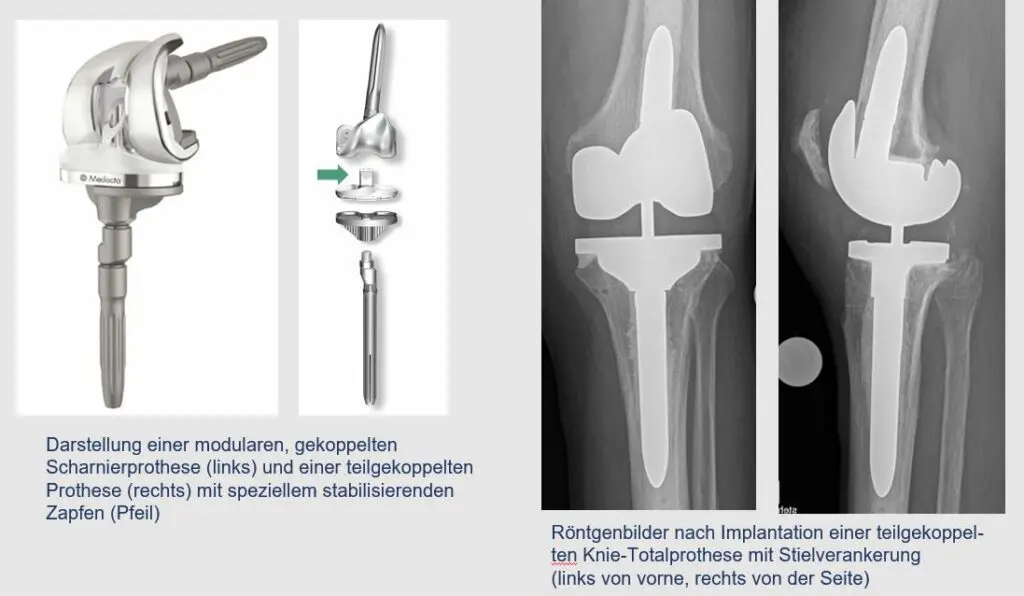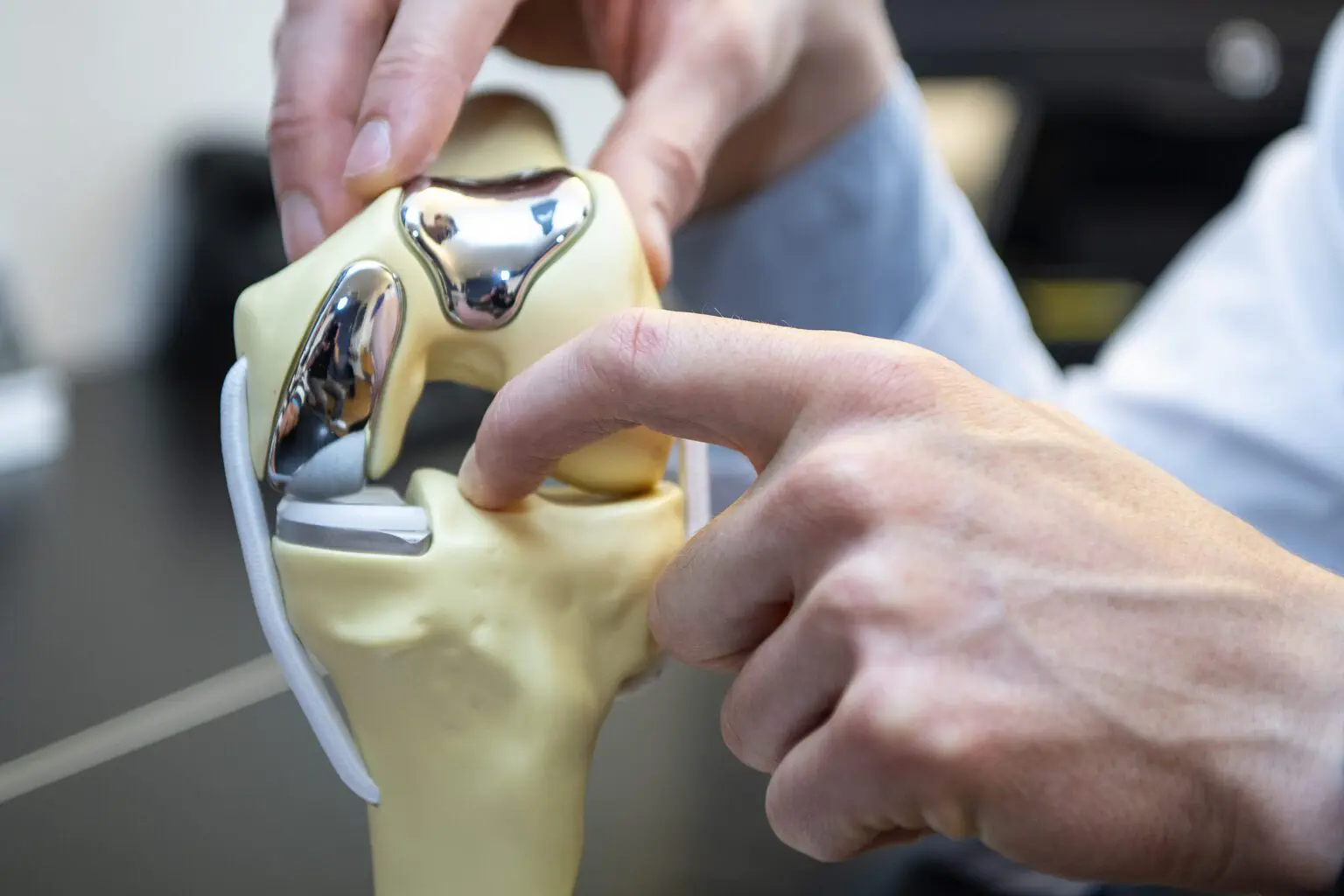
Our main principle when choosing the right type of prosthesis for you is to preserve as much of your natural knee joint as possible.
Today, we have a large number of different knee prosthesis models available. Where possible, we try to replace only the part of the joint that is actually suffering from painful wear and tear. The advantage of this is that it reduces the risk of complications, important ligament structures in the knee joint can be preserved and the movement of the knee functions more naturally. With a partial prosthesis, it is often possible to achieve faster mobilization and a more natural joint feeling with the artificial joint.
Depending on the osteoarthritis situation, different types of prosthesis are available, as shown schematically below. These differ essentially according to two criteria:
- Partial prosthesis versus total prosthesis: With a partial prosthesis, only a specific part of the joint is replaced; with a total prosthesis, the entire joint is replaced. Partial prostheses are available internally, externally, in the sliding bearing of the kneecap or in combination.
- Degree of stability of total prostheses: With total prostheses, a distinction is made between a pure surface replacement, in which movement is still stabilized by your ligaments and muscles, and a coupled prosthesis, which can support or take over the function of the ligament structures.
The choice of prosthesis depends on the following crucial questions:
- Which parts of the knee joint are affected?
- Are the ligament structures (collateral and cruciate ligaments) stable and intact?
- Are there any misalignments or bone defects that need to be corrected?
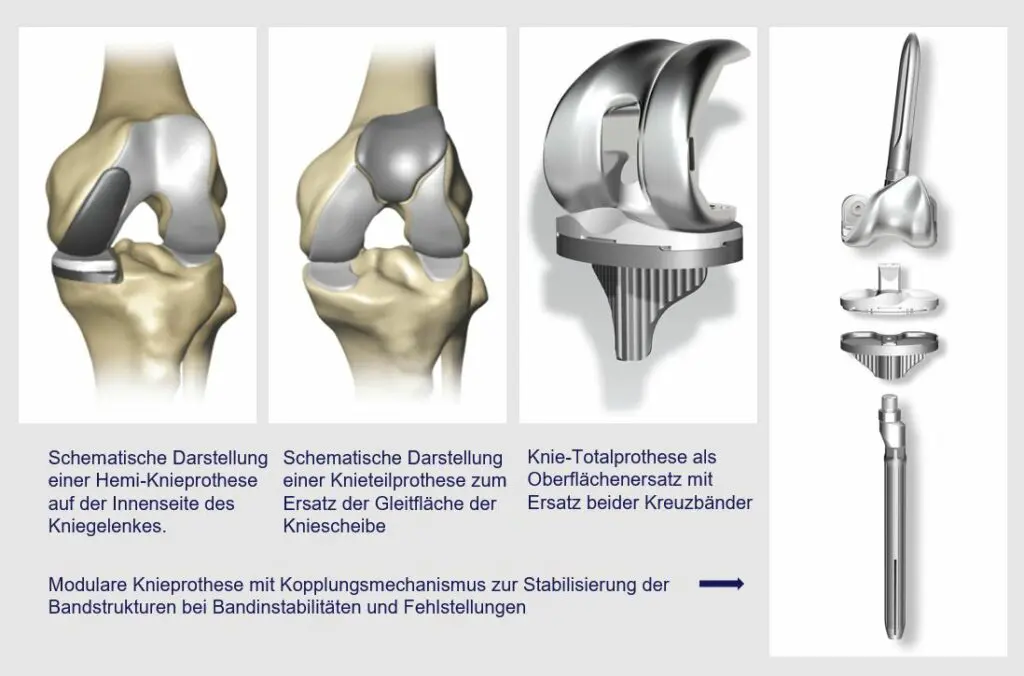
The partial knee prosthesis
According to the latest data from the Swiss Prosthesis Register SIRIS, our practice with a high proportion of partial prostheses with robotic support has a lower revision rate than the average Swiss revision rate for total and partial prostheses.
The articon practice is one of the country’s specialist centers for partial knee prostheses, i.e. the targeted replacement of only the affected part of the joint in cases of knee osteoarthritis. Whenever possible, we try to manage with a partial prosthesis. In our daily practice, over 40% of patients have been treated in this way for years.
According to scientific data, this has numerous advantages for patients:
- Minor procedure with faster rehabilitation
- Fewer complications
- More natural knee function (preservation of kinematics)
- Higher patient satisfaction
However, a number of criteria must be met for this to be successful:
- Both cruciate ligaments must be intact
- No ligament instability
- No severe restriction of movement
The frequently expressed opinion that partial prostheses do not last as long as total prostheses has not been scientifically confirmed. However, as the procedure is technically more difficult than a total knee prosthesis and, above all, less forgiving, premature failure can occur if the implant is not ideally positioned. The risk of such early failures depends largely on the surgeon’s experience.
This is why our sub-specialization in partial dentures is a key success factor for a good result with the lowest possible revision rate. Thanks to the consistent use of robotic support in our practice, we can even show that partial dentures have a lower risk of reoperation than total dentures if the indications are correct.
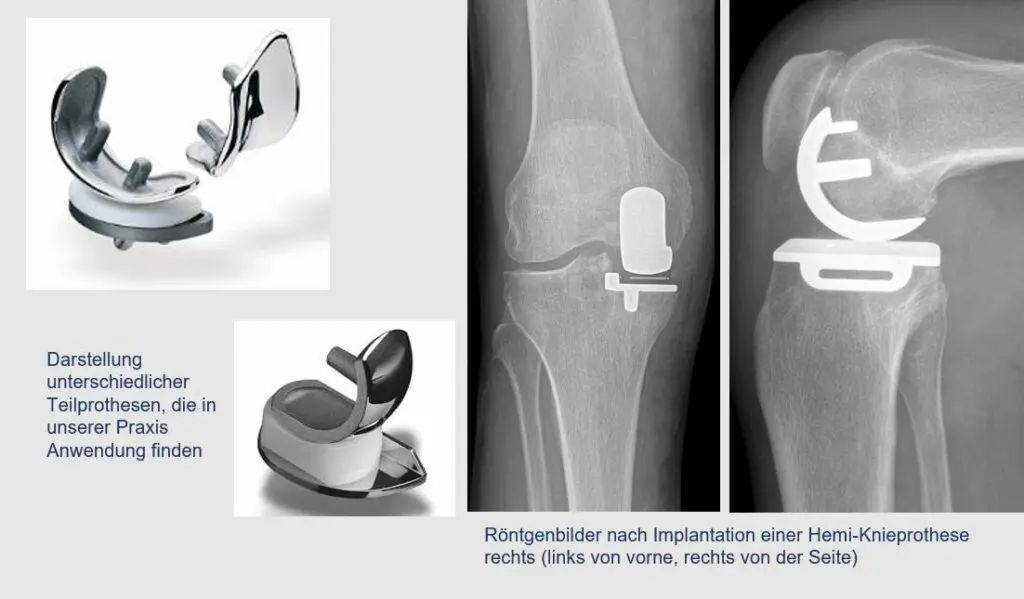
Combined partial dentures
If more than one joint section is affected but the cruciate ligaments are still intact, various partial prostheses can also be combined with each other.
In our imagination, the knee joint consists of three compartments: Internal, external and the patellofemoral joint. In this concept of combination therapy, the surface of the affected joint sections is selectively replaced – depending on the individual situation. As already explained, in contrast to a total prosthesis, which replaces all three joint sections with one implant, both cruciate ligaments of the knee joint can be preserved. As a result, the natural range of motion is better preserved and the knee retains its original stability and proprioception, which leads to a more normal joint sensation. In addition, this procedure can be regarded as bone-sparing. The basic prerequisite for this type of treatment is intact ligament stability.
As the precise implantation and coordination of the individual prosthetic components in combined partial prosthetics is technically very demanding, we currently always offer this in combination with MAKO robot technology. This guarantees the precise individual positioning of the implants in the bone.
The operation and rehabilitation of the combined partial prosthesis in the first operation is more similar to that of a total prosthesis, whereby the result is often functionally superior as described.
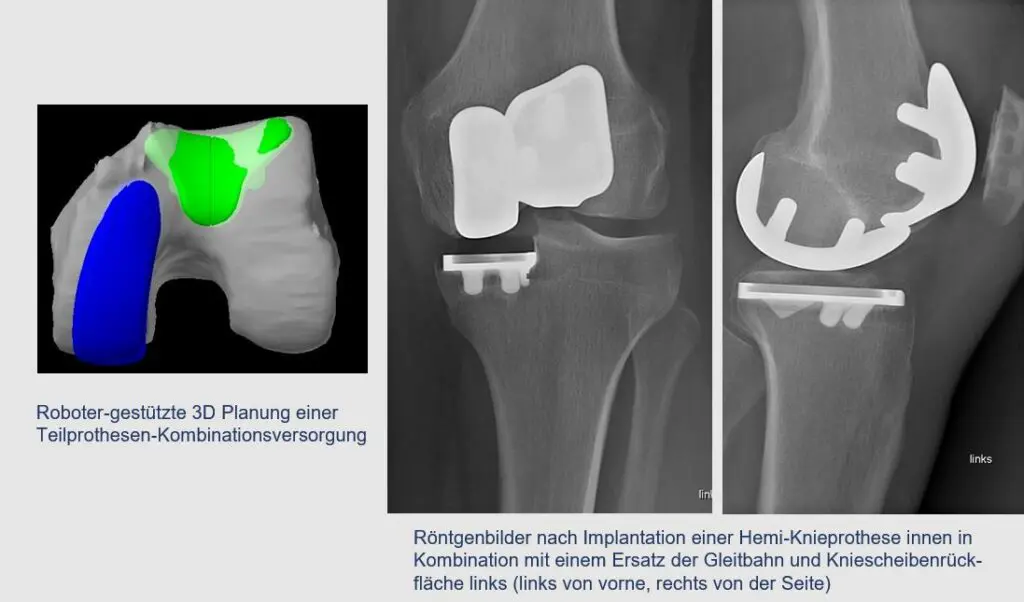
Total knee prosthesis
In contrast to a partial prosthesis, a total knee prosthesis replaces all areas of the knee joint, i.e. the inside, the outside and the sliding surface of the kneecap.
This treatment is useful for patients in whom several parts of the joint are affected or in whom the anterior cruciate ligament is torn. This applies to around half of our patients.
The modern total knee prosthesis, similar to the partial prosthesis, is essentially a surface replacement of the defective cartilage layer. This means that around 8-9 mm of bone is removed from both the upper and lower leg for the metal and plastic prosthesis components and replaced by the prosthesis.
In contrast to a partial prosthesis, the anterior cruciate ligament usually has to be removed in a total prosthesis and compensated for by the prosthesis mechanism. In fact, we mainly use prostheses that replace both cruciate ligaments, as the posterior cruciate ligament is often unable to adequately fulfill its natural function when the prosthesis is in place and the anterior cruciate ligament is missing. Some patients report a clicking sensation in their joint caused by this cruciate ligament replacement mechanism. The clicking can be annoying, but is harmless.
Patients often do not notice the significant difference between the total and partial prosthesis in everyday life. After successful rehabilitation, everyday function is almost equivalent. Differences are measurable with higher functional loads such as sports.
Due to the high standardization of the surgical technique, the restoration with a total prosthesis has low re-operation risks.
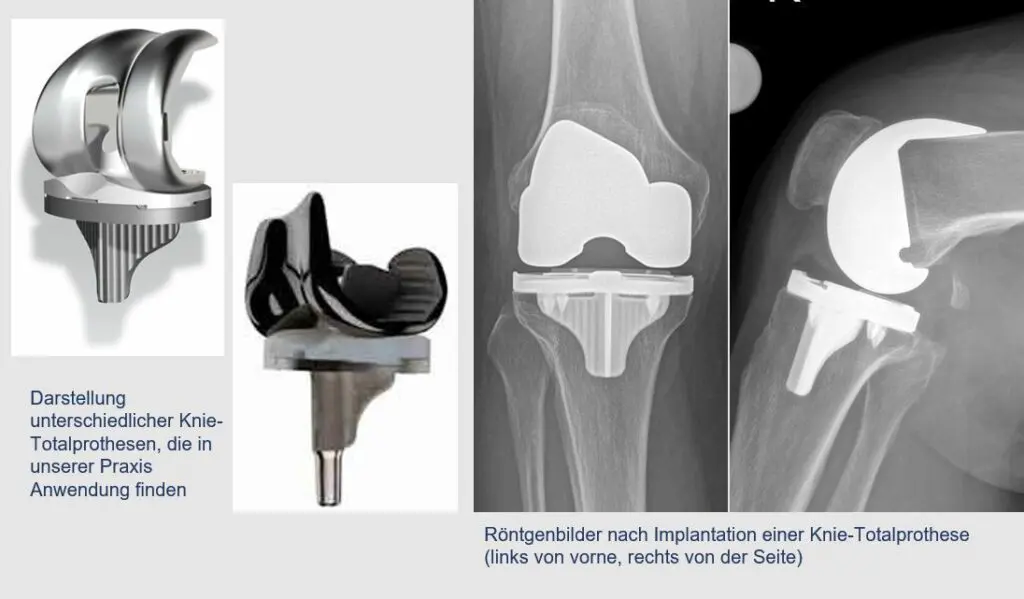
Coupled total knee prostheses
In cases of severe malalignment or instability, for example after accidents or long-term illnesses, a pure surface replacement is often not sufficient. In such cases, we use coupled or partially coupled prostheses that support or replace the collateral ligaments on the knee.
These prostheses stabilize the knee using a pivot or hinge mechanism and are often used to treat knock-knee arthritis in old age.
Due to the higher force transmission, coupled prostheses are additionally anchored in the bone with stems. The modern, modular systems allow individual adaptation to size and stability.
As they offer more guidance, the knee movement appears less natural and can lead to restrictions. Wear and loosening rates are also somewhat higher, which is why coupled prostheses are only used if sufficient stability cannot be achieved otherwise.
